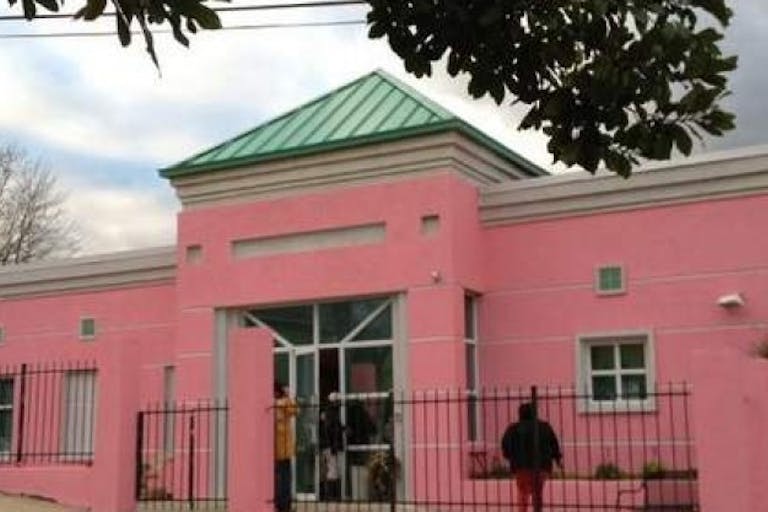
FACT CHECK: Are pro-life laws to blame for arrest of SC woman who delivered baby in a toilet?
Nancy Flanders
·
Abortion facility at heart of Supreme Court case has history of health violations
The abortion facility at the center of the Supreme Court case Dobbs v. Jackson Women’s Health Organization, The Jackson Women’s Health Organization, Mississippi’s sole abortion facility, has been cited for numerous health code violations in years past. While abortion advocates frequently blame pro-lifers for problems at abortion facilities, including the fact that they must use out-of-state abortionists, the abortion industry needs more accountability than what it currently has.
A health inspection of JWHO in 2009 found multiple violations. Some are listed below.
First of all, conditions in the facility were filthy:
According to the report, the facility “failed to ensure that the abortion suite and holding rooms were maintained in a clean and sanitary manner.”
There was a thick buildup of dust and debris on anesthesia equipment, emergency resuscitation equipment, floor and ceiling lamps, desk surfaces, and windowsills.
One of the operating tables had a rip in it, with stuffing exposed, creating a surface that couldn’t be cleaned or sterilized.
Ultrasound equipment was covered in dust.
Chairs in the lobby were stained with dark fluid, possibly blood.
Two large brown-black stains were present on the carpet near the counselor’s desk in the counseling room.
The walls in the hallway were dirty and covered with scratches.
The floor in the operating room was missing tiles.
Aborted babies were stored for two weeks in cardboard boxes next to the recovery rooms. The aborted babies weren’t refrigerated, and the temperature in the room was 88 degrees Fahrenheit. Health code regulations specify that medical waste, including aborted babies, shouldn’t be stored in temperatures above 38 degrees Fahrenheit for more than seven days. (One can only imagine the smell that must have permeated the facility as human remains were left for two weeks in warm temperatures.)
READ: Female scholars to SCOTUS: Abortion deserves no credit for women’s success
There were other problems at the facility affecting patient safety:
Staff wasn’t trained in CPR.
The facility had no plan for emergencies such as fires or disasters. They conducted no fire drills for nine months.
According to the report, “the facility failed to provide sufficient nursing staff on duty at all times to plan and provide nursing care to the patients.” It was determined there weren’t enough nurses on duty to take care of the patients.
No registered nurse was present during abortions. There was no nurse to ensure “appropriate care during procedures.” Abortion rooms weren’t supervised by an experienced registered nurse.
The facility had only one nurse and she was trying to cover two post-operative recovery rooms. According to the report, the facility “[f]ailed to provide adequate provisions for immediate post-operative care.”
The emergency call system in one recovery room didn’t work.
Nursing and medical staff had no annual review of clinic policies.
The facility bathroom had no soap.
The facility didn’t provide continuing education to its staff in infection control and disease transmission.
The facility also failed to secure controlled substances, leaving them where unauthorized staff could access them.
The roof was also leaking. An overflowing bucket of water was sitting under the leak. According to inspectors, the dripping was so loud, it distracted patients during their counseling sessions.
Article continues below
Dear Reader,
In 2026, Live Action is heading straight where the battle is fiercest: college campuses.
We have a bold initiative to establish 100 Live Action campus chapters within the next year, and your partnership will make it a success!
Your support today will help train and equip young leaders, bring Live Action’s educational content into academic environments, host on-campus events and debates, and empower students to challenge the pro-abortion status quo with truth and compassion.
Invest in pro-life grassroots outreach and cultural formation with your DOUBLED year-end gift!
A year later, most of these problems hadn’t been fixed, despite the facility staff promising inspectors they would remedy them.
The roof still wasn’t repaired. The leaky bucket was still there. Aborted babies were still stored for two weeks at room temperature. In fact, the situation with “medical waste” had gotten worse. Infectious medical waste was supposed to be stored in disposable plastic bags thick enough to be impervious to moisture and able to resist tearing or bursting. Disposable paper sheeting from exam tables, pads, and gauze were in bags in cardboard boxes stored next to the recovery room for two weeks.
The emergency call system still didn’t work, and it looked like the facility made no effort at all to fix the problems.
In 2011, it was determined that the facility had no transfer agreement with a hospital in case of emergencies. There were fire hazards, and fire extinguishers weren’t tested or maintained. One fire extinguisher was manufactured in 1996. To make matters worse, the door had an electromagnetic lock that could only be released by staff, which meant patients might not be able to escape in an emergency
The facility still “failed to maintain the structure in good repair,” and didn’t conduct performance appraisals on any of the employees. Mississippi women deserve better than abortion and a facility with a history of poor conditions.
“Like” Live Action News on Facebook for more pro-life news and commentary!
Live Action News is pro-life news and commentary from a pro-life perspective.
Contact editor@liveaction.org for questions, corrections, or if you are seeking permission to reprint any Live Action News content.
Guest Articles: To submit a guest article to Live Action News, email editor@liveaction.org with an attached Word document of 800-1000 words. Please also attach any photos relevant to your submission if applicable. If your submission is accepted for publication, you will be notified within three weeks. Guest articles are not compensated (see our Open License Agreement). Thank you for your interest in Live Action News!

Nancy Flanders
·
International
Cassy Cooke
·
Analysis
Cassy Cooke
·
Analysis
Angeline Tan
·
Analysis
Cassy Cooke
·
Analysis
Angeline Tan
·
Guest Column
Sarah Terzo
·
Abortion Pill
Sarah Terzo
·
Guest Column
Sarah Terzo
·
Guest Column
Sarah Terzo
·
Guest Column
Sarah Terzo
·